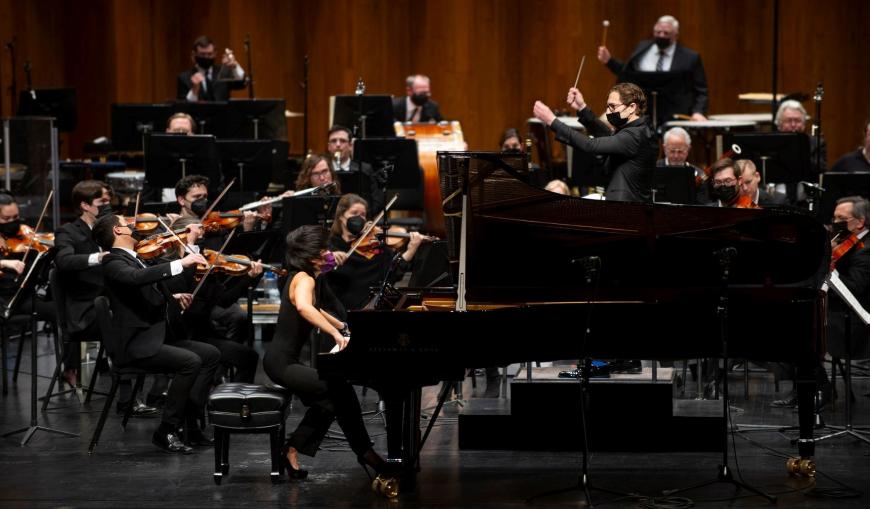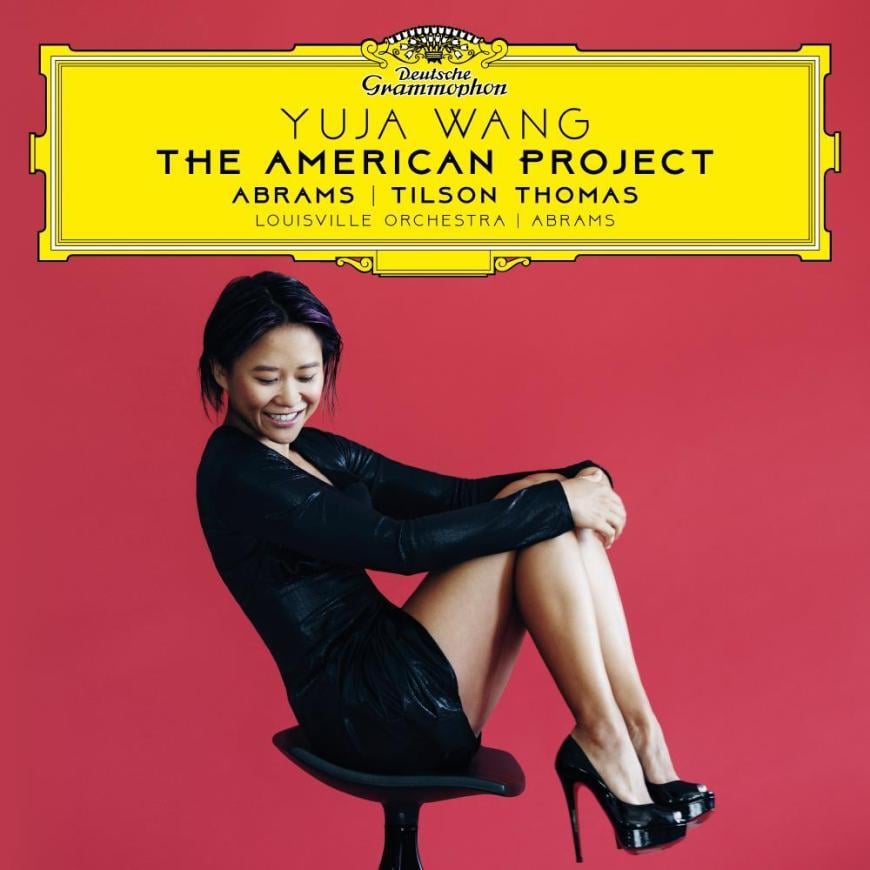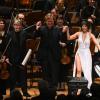
The Teddy Abrams Express continues to roll through the byways and superhighways of American music with The American Project, although superstar pianist Yuja Wang gets top billing and the label is Germany’s Deutsche Grammophon. The album is also a continuation of the Louisville Orchestra’s resurrection on recordings after a nearly 30-year drought, which got off to a tumultuous start with All In in 2017 and The Order of Nature in 2019 (both on Decca Gold) and then went quiet until now (probably the pandemic pause had a lot to do with that).

Abrams’s profile as a composer thus far has been that of an exuberant human vacuum cleaner of American music, sucking in every idiom he can possibly think of and making it all work together somehow. Yuja was his classmate at the Curtis Institute — he used to help her prepare concerto performances by sight-reading the orchestral parts on the piano — so he knows what her capabilities are. Somewhere along the line, he must have found out that there are no known limits on what her technique can handle — and his new Piano Concerto for her plays right into that realization.
But first, the album starts out unusually with an encore, a four-and-a-half-minute toccata for solo piano by Abrams’s mentor, Michael Tilson Thomas, called You Come Here Often? — a pickup line if ever there was one (there’s even a wolf whistle built into the score). It’s a bright, spritely work with a touch of boogie-woogie down the stretch, seemingly tailor-made for the sharp, percussive playing of Yuja.
Abrams’s Piano Concerto retains the boisterous glee of his earlier orchestral works — an American polymath flexing his musical muscles and giving his fearless soloist a spectacular workout on the keyboard. There are a few oblique and direct references to Rhapsody in Blue — which figures, since Abrams’s piece was originally meant to be a concert companion to George Gershwin’s until it grew into a 37-minute all-embracing monster of a single movement. I also hear repeated references to Frédéric Chopin’s Etude Op. 10, No. 3, which might have some private meaning.
We know where this project is going soon enough, for the MTT boogie is a tip-off to the opening of the concerto, a direct channeling of the big bands of the 1930s — and Abrams can make his Louisville band swing. Yuja arrives at the dance late, but she takes off with a long, jazzy cadenza — the first of four cadenzas that Abrams gives to his old classmate — polishing it off with a swagger as it gets more technically fearsome the further it goes.
The “Exploration” after the “Exposition” section takes the place of a development. Along the way, the orchestra, augmented with three often dominant saxophones, hits a two-chord vamp and riffs off that in a big crescendo. “Cadenza II” is Romantic in nature, followed by a “Relaxed” section that briefly becomes a smooth bossa nova-like groove and morphs into other rhythms. The “Solos” section gets a bit awkward when trying to instigate a doubting mood before slipping back into the Latin groove.
“Cadenza III” refers indirectly to Gershwin and behaves like a conventional Romantic cadenza before the opening boogie jazz reemerges in the orchestra through fading keyboard tremolos. After a fourth hammering cadenza for Yuja, this concerto comes to a suitably raucous conclusion, very much in the spirit, and sometimes the letter, of its Gershwin model. I rather like this piece.




